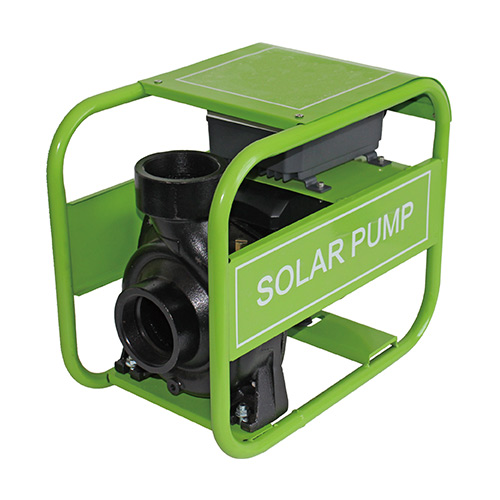NEWS
Welcome to My Blog!
Before we dive into the content, if you’re interested in our products or have any questions, please feel free to visit our Contact Us page on the website. Our team is ready to assist you with inquiries, orders, or any support you may need.
Now, let’s get started on our journey together. I hope you find the content here insightful, engaging, and valuable.
Table of Contents
As the world shifts toward renewable energy solutions, solar water pumps have emerged as an effective, sustainable, and eco-friendly alternative to traditional water pumping systems. Whether you need water for your garden, farm, or off-grid property, solar water pumps can provide a reliable, cost-effective solution. In this comprehensive guide, we’ll explore everything you need to know about solar water pumps, including how they work, their benefits, and how to choose the right system for your needs.
What is a Solar Water Pump?

A solar water pump is a water pumping system powered entirely by solar energy. Unlike traditional pumps that rely on electricity or fuel, solar water pumps use solar panels to convert sunlight into electrical power, which then drives a motor to pump water from a source such as a well, pond, or river.
Key components of a solar water pump system:
- Solar panels: These capture sunlight and convert it into electricity.
- Pump: The pump, which can be either submersible or surface-mounted, moves the water.
- Controller: Regulates the electricity flow to the pump.
- Battery (optional): Stores excess solar energy for use when sunlight is not available.
How does it work?
The solar panels generate electricity from sunlight, which powers the pump. The system can operate directly from the solar panels or use a battery to store energy for use during cloudy days or nighttime. The pump draws water from a water source and transports it to where it’s needed.
Types of Solar Water Pumps
There are two main types of solar water pumps: submersible pumps and surface pumps, each designed for specific applications.
- Submersible Solar Water Pumps:
- Ideal for deep wells or boreholes where water is located far below the surface.
- The pump is submerged underwater, drawing water from deep sources.
- Surface Solar Water Pumps:
- Used for shallow wells, ponds, and surface water bodies.
- These pumps sit above the water source and are used for irrigation or other surface water needs.
Additionally, DC solar pumps are more efficient in low-light conditions, while AC pumps are more suited for larger installations that require more power.
Benefits of Using Solar Water Pumps

Solar water pumps offer numerous advantages over traditional water pumping systems, making them an attractive choice for various applications.
- Energy Efficiency:
Solar water pumps use renewable energy, reducing reliance on grid electricity or fossil fuels. This results in significant cost savings on energy bills. - Environmentally Friendly:
Solar water pumps produce no emissions, helping to reduce your carbon footprint and contribute to sustainable water management solutions. - Cost Savings:
The initial investment in solar water pumps can be recouped over time due to the low operating costs. Once installed, these systems require minimal maintenance and have a long lifespan. - Off-Grid Capability:
Solar water pumps are perfect for remote or off-grid locations where access to electricity is limited or unavailable. They ensure a reliable water supply in rural areas, farms, or vacation properties. - Low Maintenance:
Compared to conventional diesel or electric pumps, solar pumps require minimal maintenance. Solar panels have no moving parts and need little upkeep.
Applications of Solar Water Pumps
Solar water pumps are used in a variety of sectors, from agriculture to residential and industrial applications.
- Agriculture:
Solar water pumps are widely used for irrigation in farms, where they can provide a reliable and cost-effective water source. They are also used for livestock watering, especially in remote areas. - Residential:
Homeowners can use solar water pumps for garden irrigation, swimming pools, or well water systems. Solar pumps can also help in maintaining a sustainable water supply in off-grid homes. - Commercial and Industrial:
Solar water pumps are ideal for use in large-scale agricultural operations, municipal water systems, and even in commercial swimming pools. They offer a sustainable solution for businesses looking to reduce energy costs.
How to Choose the Right Solar Water Pump
Selecting the right solar water pump depends on various factors, including your water requirements, the location of the water source, and your budget.
Factors to Consider:
- Water Flow Rate:
Calculate how much water you need to pump and at what flow rate. This will help you choose a pump that meets your requirements. - Head (Height):
The height the water needs to be lifted (known as “head”) plays a key role in selecting the appropriate pump. Solar pumps are designed to operate at different head levels. - Solar Panel Size:
Choose a solar pump system that includes an appropriately sized set of panels to generate enough power to drive the pump efficiently. - Battery Storage:
If you need your system to operate at night or on cloudy days, opt for a system with battery storage to store excess solar energy. - Pump Type:
Decide between a submersible pump (for deep wells) or a surface pump (for shallow water sources) depending on your needs.
Installation of Solar Water Pumps

Installing a solar water pump can be done by professionals or as a DIY project, depending on the complexity of the system.
Step-by-Step Installation:
- Site Preparation:
Ensure that the site has adequate sunlight exposure for the solar panels. - Mounting Solar Panels:
Install the solar panels in a location that receives the most sunlight, ideally facing south (in the Northern Hemisphere) at a 30-45° angle. - Pump Setup:
Install the pump in the water source (well, pond, or river) and connect it to the solar power system. - Testing and Adjustment:
After installation, test the system to ensure it’s functioning efficiently. Make necessary adjustments to panel angles and pump placement.
Maintenance and Troubleshooting
While solar water pumps require minimal maintenance, regular checks can help extend their lifespan and ensure optimal performance.
Maintenance Tips:
- Clean the solar panels regularly to remove dust and dirt, ensuring maximum sunlight absorption.
- Inspect the pump and controller for wear and tear.
- Check the wiring for signs of damage.
Troubleshooting:
- Pump Not Working:
Check if the solar panels are receiving enough sunlight, or if the battery is charged. - Low Water Flow:
Ensure that the pump is not clogged and that the solar panels are generating sufficient power.
Costs of Solar Water Pumps
The cost of installing a solar water pump system varies based on the size and complexity of the system.
Initial Investment:
- The upfront cost includes the solar panels, pump, controller, and installation.
- Prices range from USD 300 to USD 3,000 depending on the system’s size and features.
Long-Term Savings:
- Solar water pumps reduce energy costs significantly. Over time, the savings on electricity bills can pay back the initial investment.
Environmental Benefits of Solar Water Pumps

Switching to solar water pumps is not only cost-effective but also contributes to environmental sustainability.
- Carbon Emissions Reduction:
Solar pumps produce no emissions, reducing your carbon footprint. - Sustainability:
Solar-powered systems use renewable energy, contributing to a greener future.
Conclusion
Solar water pumps are a powerful, eco-friendly solution for water pumping needs, whether for agricultural, residential, or industrial applications. By using renewable solar energy, these pumps not only reduce energy costs but also help mitigate environmental impacts. With a wide range of applications, easy installation, and low maintenance, solar water pumps are an excellent investment for anyone looking to save money and contribute to a sustainable future.
FAQ
What is a solar water pump?
A solar water pump is a system powered by solar energy that uses solar panels to generate electricity, which then powers a pump to move water from a source to the desired location.
How do solar water pumps work?
Solar panels convert sunlight into electrical energy, which is then used to run the pump. The pump moves water from a well, pond, or other water sources, and may include a battery to store energy for use when sunlight is unavailable.
What are the benefits of using a solar water pump?
Solar water pumps are energy-efficient, environmentally friendly, and cost-effective. They reduce electricity costs, have minimal maintenance requirements, and are ideal for remote or off-grid locations.
How much does a solar water pump cost?
The cost of a solar water pump system can range from USD 300 to USD 3,000, depending on the pump size, system components, and installation requirements.
Can solar water pumps be used for irrigation?
Yes, solar water pumps are commonly used for irrigation systems, especially in remote areas where electricity is not readily available, offering an efficient and sustainable solution for agricultural needs.
Ready to Make the Switch to Solar Water Pumps?
If you’re looking for a sustainable, cost-effective, and eco-friendly solution to your water pumping needs, a solar water pump might be the perfect choice. Explore our wide range of solar water pump systems and get expert advice on selecting the best solution for your requirements.
Contact us today to learn more about our products, get a free consultation, or request a quote! Start saving on energy costs and contributing to a greener future today.

